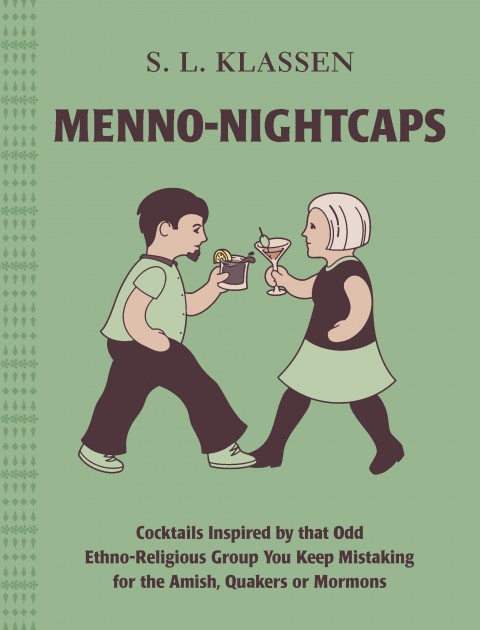 Personally, I’m more of a hat kinda gal than a bonnet one. Not that I have any problems with the Mennonite women out there who choose to wear bonnets and find them spiritually meaningful. I’m not calling for a bonnet ban. I think, you know, that women should wear whatever they want on their heads.
Personally, I’m more of a hat kinda gal than a bonnet one. Not that I have any problems with the Mennonite women out there who choose to wear bonnets and find them spiritually meaningful. I’m not calling for a bonnet ban. I think, you know, that women should wear whatever they want on their heads.
It’s just that for me, personally, I’ve had enough of the Bonnet.
I do remember how, back in the early 1970s, child-sized bonnets used to out-sell roll kuchen at the New Hamburg relief sale. The place would be teeming with pint-sized little girls in shorts, tank tops and demure little bonnets. I was one of them for a year or two, though it should be admitted that the popularity of this headgear had less to do with an admiration of the Old Order Mennonite way of life than the craze for Holly Hobbie that was taking girldom by storm at the time. That, and Little House on the Prairie.
Since then, bonnets have done everything from selling romance novels to inspiring public art. A certain Steinbach Mennonite has even claimed it as an emblem for the satire of all things Mennonite and/or rural Manitoban.
Which is odd, really, because the Mennonites in the west never even participated in the great Bonnet Battles that tore through Ontario and parts of the US around the turn of the twentieth century. Maybe that’s part of the humour. Or maybe not. These days, few people outside a rarefied group of Mennonite historians actually understand the importance of the Bonnet. Even I – I must admit – have only an inkling.
I first learned about the Bonnet back when I was an impressionable young Mennonite sitting in a youth Sunday School class in the early 1980s. It was a special lesson that day. Rather than a rip-roaring discussion on the hidden meanings behind the feeding of the four thousand or whether Jesus wants us to have sex, we were met that day with a visit from the Church historian.
We sat there, wide-eyed and eager to finally hear the riveting story of the founding of our Church – a tale that was withheld from our ears until we were deemed mature enough to grasp its significance. I don’t mean the founding of the Mennonite faith or even the founding of our branch of the Mennonite faith. I’d learn that in Mennonite history classes in school. No, she was there to tell us of our own congregation’s proud history when a subset of First Mennonite Church in Kitchener picked up their belongings and marched up the hill to start a new congregation in defiance of the Ontario Mennonite leadership.
By the time I heard the story, Stirling Ave. Mennonite Church was once again a member of the broader bodies. But the historian who explained it all to us on that fateful day was still brimming with pride at the rebellious spirit and righteous indignation of our fore bearers so many years ago.
And she was right.
We didn’t see it at the time. We would have liked a juicy scandal or a rift over deep, significant theological understandings of the Bible (what can I say? Mennonite youth are a little odd). Instead, we got the story about bonnets and hats.
The poor historian. Try as she might, she could not compel our teenaged minds to see the broader issues that the great hat and bonnet dispute entailed. We emerged from that session not sharing her pride or even gaining a greater understanding of the shifting currents of history, of patriarchy, of the fear of contamination, of the instinct for justice. She might have known all that was there in the story, but it’s a hard thing to teach to a handful of pious but bored fourteen year-olds.
We found it all just a little embarrassing.
It was much later that I began to glean the lessons and significance of this little part of our heritage. I can’t provide all the nuance this story deserves and still finish by cocktail hour but if you learn nothing else from the Bonnet Battles, remember this: The patriarchy is a lousy peacemaker; but when it becomes too high-handed in its ways, you can always go your own way.
In 1924, after years of controversy, the all-male body of the conference of Mennonites in Ontario instructed the bishops of the Church to withhold communion from women who wore hats rather than the old-fashioned bonnets that the Mennonite Church deemed more appropriately modest.
They’d already been advocating for the Bonnet for a number of years and the historical record hints that there were divisions among the women themselves — some pleased (or at least willing) to wear the Bonnet as a sign of their faith and obedience to the Church, some refusing outright and asking for Gospel proof of its merit, and still others seeking some kind of compromise.
The urban women of Kitchener were, in particular, in quiet rebellion in the Church. And the male Church leadership in Ontario split, some preaching that an inclusive, welcoming Church means being open to women in hats, and others arguing that discipleship requires a rejection of worldly habits like, for instance, that seductive little cloche.
I am, of course, paraphrasing here.
Maybe there was no easy way out of such an impasse. Certainly, there were none that were palatable to the patriarchs of the Ontario conference who said quite plainly that women needed to show their submission to the men in their lives – father, husband, brother, pastor – and don the Bonnet. I’m not exaggerating. There was no subtlety. The controversy was all about women ceding their independence to the male leadership of the Church.
But it wasn’t a horrible, tragic sort of schism. When the brave hat-bearing women of First Mennonite and their male allies decided they needed to part ways with the conference, they just did it. No civil war broke out. No First Mennonite Romeos tried to marry Stirling Juliets – or if they did, the romance caused no murders or suicides. Actually, families that divided with the Church still stuck together at families. They probably just didn’t talk about hats at Christmas dinner.
The folks at Stirling didn’t escape the patriarchy entirely. Within a couple of years, the they again found themselves disputing women’s head coverings. Sure, they said no to the Bonnet but they had to wonder what inclusiveness really meant with regards to women’s headgear. There was just so much diversity. When it came to a vote, they decided to leave headgear up to the women themselves (though the decision came with an admonition for simplicity). But it wasn’t an easy vote.
And so it went for a couple decades. Stirling Ave Mennonite Church functioned as an independent Mennonite Church, unaffiliated to the Conference of Mennonites in Ontario. But it walked alongside the other Mennonite Churches in Ontario, contributing to various joint initiatives from time to time.
They didn’t stay apart forever. In 1946, the people of Stirling aligned themselves with the bi-national General Conference, and then in 1969, Stirling decided to join (or re-join) the Conference of Mennonites in Ontario. They got a bit of an apology from one of the Bishops, perhaps on behalf of the Conference, and since Bonnet-wearing had dwindled among all but the Old Order Mennonites (and the seven-year old Holly Hobbie aficionados were not quite yet on the scene), hats and bonnets had all started to seem like a non-issue.
By the time I heard about it, even the Church historians had a hard time explaining the issue’s importance – that the Church structure had done harm, shaming women and denying them a place in the discussion; and that the people of Stirling had learned that they could thrive without it. Instead, the historians mumbled something about episcopal authority vs congregational rule. Which isn’t exactly false. It just leaves out the embarrassing parts.
But if we keep doing that, we might forget the important lessons of the story. Because the patriarchy’s still a lousy peacemaker; and we must always remember that we can chart our own course without it, when it’s the right thing to do.
It’s not like the patriarchy’s gone anywhere.
Nope. It’s there in every paternalistic proclamation or decision uttered by people in power to those with less power. Sometimes they’re directed to women (with or without hats). But these days they’re as often as not directed to members of sexual minority groups who, like the women in hats of yore, threaten our sense of order. The Church might make little compromises (the Church leaders of the 1920s did this too) and declare itself inclusive but unless we’re willing to face down the patriarchy and deal with all the wildness of sexual diversity, we might as well just hide under the rims of our bonnets and submit to the rule of the father figures who are so certain they know what is best.
Put that in your bonnet and drink it.
The Bonnet Blaster
There actually already exists a cocktail called a Hat Trick and it even features rhubarb bitters. The Bonnet Blaster is a little bit different, featuring port instead of sherry and leaving out Aperol entirely because when there’s a patriarchy that needs smashing, who has time for buying new ingredients? 
- 1.5 oz ruby port
- 1/4 oz fresh squeezed lemon juice
- 3-4 dashes rhubarb bitters
- 4 oz prosecco
I didn’t even bother with garnishing this time. Combine the first three ingredients and then top with chilled prosecco. Enjoy.



May I quote you, esp last paragraphs? 🙂
Yes, of course, Tim but “As the Drunken Menno says…” is not always a great way to gain credibility.
The problem for us Mennonites and Amish started when Jesus’s headship over the males became corrupted. It all has gone downhill from there. Just imagine if the males in the world were to love their wives like Jesus loved his congregation – just imagine how that affects everyone around them…You remember the greater love hath no man verse?… FACT is Jesus did that EXACTLY! We are all in BIG TROUBLE.